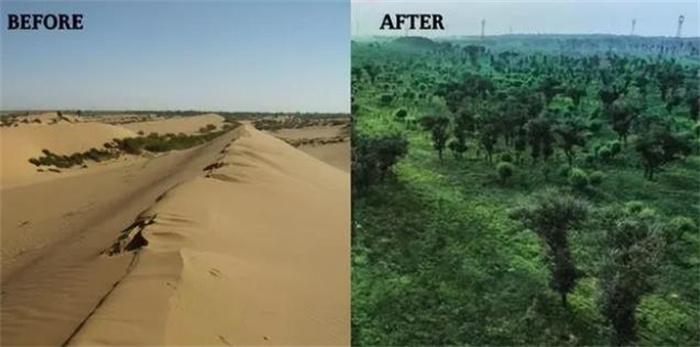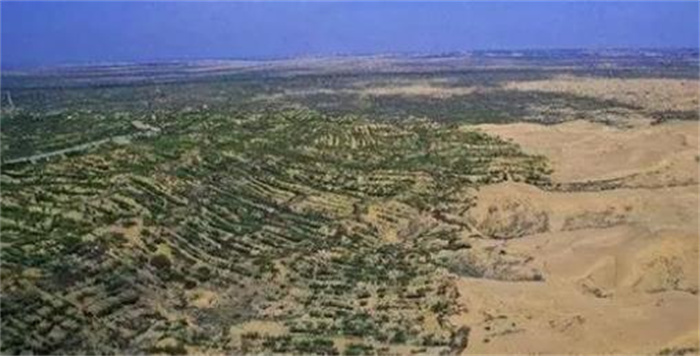Desert Carbon Dioxide Absorption: Implications of Forestation
Why Do Deserts Absorb Carbon Dioxide? Would It Be Better If The Desert Was Turned Into A Forest?
The desert is a place full of mysteries and mysteries. In this vast land, there are many wonderful things that we did not understand. And one fascinating topic is: Why do deserts absorb carbon dioxide? The issue of carbon dioxide emissions has always been a hot spot for us, and the desert has become an unexpected "absorber".
So, what kind of magical phenomenon is this? If we turn deserts into forests, can we solve the problem of carbon dioxide? Let's dive into this topic and unravel the mystery of the desert.
What Are The Formation And Ecological Characteristics Of Deserts?
The formation of deserts is a long-term evolutionary process. According to studies, the formation of deserts is related to many factors, among which climate change, geomorphological evolution, vegetation cover, and human activities are the most important factors.
The formation of deserts dates back thousands of years. During that period, the climate on the Earth's surface was very humid, so large amounts of precipitation evaporated and accumulated at the surface. However, the earth's natural environment has changed, with higher temperatures and less rainfall, gradually deserting the originally lush meadows and forests, and eventually turning them into deserts.
The ecological characteristics of the desert are also very unique. The environmental conditions of the desert are very harsh, with dry air, a lack of water resources, and violent fluctuations in temperature. These conditions result in deserts with almost no vegetation and low biodiversity. However, there is still some life in the desert that can survive in this harsh environment.
Weasels, foxes, desert hares, and other animals have adapted to desert conditions and live in them. In addition, there are special plants in the desert, such as cacti, agave, etc., which can draw water and nutrients from the sandy soil through a long root system.
There is a very peculiar phenomenon in the desert, which people call "roaming cities". This kind of city is formed by sand, and the wind blows sand to form the whole city. One of the most famous roaming cities is the Mer Human Ruins. The site is located in the Mauritanian region of West Africa, and according to research, the city existed between 300 and 700 years ago. Since roaming cities are very difficult to maintain, and over time, entire cities will gradually disappear.
What Is The Mechanism Of Carbon Dioxide Absorption And Storage In Deserts?
There are a large number of vegetation and organisms in the desert, which absorb carbon dioxide to form organic matter through photosynthesis so that the carbon dioxide content in the desert has been alleviated to a certain extent. These organic matter will be reduced to carbon dioxide by microorganisms through decomposition, and release energy to power plant growth, thus forming an ecosystem in which organic matter, microorganisms, and plants cycle and interact with each other.
The sandy and stony soils in the desert easily store carbon dioxide. The carbon in these soils can be retained for a long time after being absorbed. At the same time, the relatively stable temperature and dry climate in the desert also help reduce the volatilization of carbon dioxide.
The desert also has a lot of salt marshes and tidal flats, and these areas will form a large amount of saline soil, which has a high capacity for carbon dioxide adsorption and can effectively store a large amount of carbon dioxide.
What Are The Methods Of Transformation And Treatment Of Desert Ecology?
Water is the source of life, so the first step in desert transformation is to solve the problem of water scarcity. Planting adaptable tree species and herbaceous plants with short growth cycles in desert areas improves the looseness of the desert floor and increases the soil moisture content through the substances secreted by the roots of plants. This can effectively slow down the desertification process and make the vegetation develop in the direction of optimization.
Introduction of modern technologies, such as plant genetic improvement and water-saving irrigation techniques. Water-saving irrigation technology can maximize the use of water sources and reduce the waste of water resources, and at the same time, because of the unfavorable situation of desert ecological conditions, genetic improvement technology can be used to introduce new drought-resistant and cold-resistant species to improve the ecological environment of desert areas.
Strengthen the ecological supervision system, and formulate reasonable plans and standards for desert ecological construction. By establishing a sound regulatory system and standardizing the guidance of desert ecological construction, it can effectively curb illegal occupation of deserts, wild mining of minerals, and other behaviors that damage the natural environment, ensure the stability of desert ecology, and promote the good development of the ecological environment.
Attach importance to environmental awareness and promote the construction of national environmental protection culture. Both urban and rural residents should maintain environmental awareness to reduce the negative impact on human beings, thereby promoting the improvement and restoration of desert ecology.
Environmental protection issues are never simply about reversing the ecological landscape but require a combination of factors. Either way, short-term and long-term effects should be taken into account, and based on environmental protection, human economic and social development should also be taken into account. Discussing and resolving these issues is the responsibility of every one of us and an excellent direction for the progress of our society.







